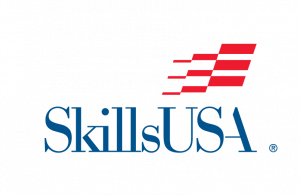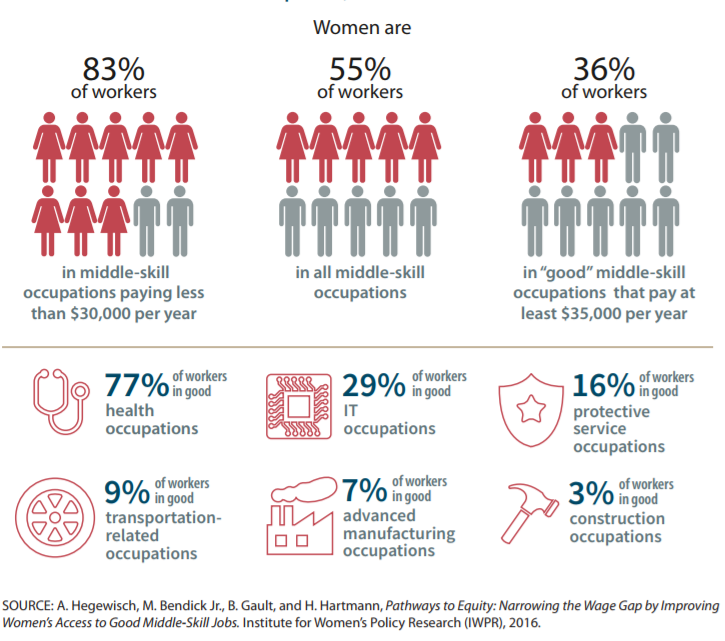The views, opinions, services and products shared in this post are solely for educational purposes and do not imply agreement or endorsement by Advance CTE, nor discrimination against similar brands, products or services not mentioned.
 As a state Career Technical Education (CTE) leader, you’ve likely heard the phrase “skills gap” many times. We hear it often at SkillsUSA, too, especially from our current and prospective industry partners looking to secure their future workforce. At more than 400,000 student and teacher members, SkillsUSA is the largest Career and Technical Student Organization (CTSO) in the U.S. devoted to the skilled trades, and that’s one of the reasons we describe ourselves as “the #1 workforce development organization for students.” Another reason is our approach to closing the skills gap, one that focuses on the development of more than technical skills alone.
As a state Career Technical Education (CTE) leader, you’ve likely heard the phrase “skills gap” many times. We hear it often at SkillsUSA, too, especially from our current and prospective industry partners looking to secure their future workforce. At more than 400,000 student and teacher members, SkillsUSA is the largest Career and Technical Student Organization (CTSO) in the U.S. devoted to the skilled trades, and that’s one of the reasons we describe ourselves as “the #1 workforce development organization for students.” Another reason is our approach to closing the skills gap, one that focuses on the development of more than technical skills alone.
Yes, most discussions around the skills gap center around the need for hands-on technical skills, and understandably so. After all, the manufacturing industry alone forecasts more than 2.1 million unfilled jobs by 2030, and other industries offer their own daunting predictions. In fact, according to a recent report from McKinsey and Company, 87% of companies worldwide claim to either be experiencing a skills gap now or expecting to experience one in the next few years. Viewing the skills gap as mainly a shortage of technical skills is so pervasive because that shortage is such a clear and present threat to our global economy.
 But there’s another aspect of the skills gap that’s just as big a threat. When we speak with industry, we hear repeatedly that entry-level employees also lack what are often called “employability” or “soft” skills. These are skills such as communication, teamwork, integrity, professionalism, and more that set employees apart as leaders, achievers, and difference-makers, which can foster success in any career… and in life itself.
But there’s another aspect of the skills gap that’s just as big a threat. When we speak with industry, we hear repeatedly that entry-level employees also lack what are often called “employability” or “soft” skills. These are skills such as communication, teamwork, integrity, professionalism, and more that set employees apart as leaders, achievers, and difference-makers, which can foster success in any career… and in life itself.
Those are exactly the types of skills we work to develop in our SkillsUSA students as we accomplish our mission: to empower students to become skilled professionals, career-ready leaders, and responsible community members. When students combine those life skills with their hands-on skills, their potential is truly limitless.
One of our teachers, Amanda McClure of Union Grove High School in McDonough, Georgia, says it best: “SkillsUSA transforms timid students into leaders, disinterested students into competitors and self-centered students into team players. I have seen the positive changes SkillsUSA makes in my students’ lives and witnessed their success in college and careers as a result of involvement.”
 According to the recent “SkillsUSA Advantage Report,” released by the Student Research Foundation in 2022, SkillsUSA members consistently outperform their peers not enrolled in a CTSO in seven essential areas: earning a license or certification, meeting potential employers, being excited about their chosen career, gaining work experience, understanding the work environment, being excited about school, and connecting school to the real word.
According to the recent “SkillsUSA Advantage Report,” released by the Student Research Foundation in 2022, SkillsUSA members consistently outperform their peers not enrolled in a CTSO in seven essential areas: earning a license or certification, meeting potential employers, being excited about their chosen career, gaining work experience, understanding the work environment, being excited about school, and connecting school to the real word.
Those results are further proof that CTE is at its strongest and most impactful when it’s shaping the whole student into a confident, focused leader and contributor, one who’s uniquely skilled to succeed both personally and professionally. Showing the nation that CTE is unrivaled when it comes to setting students up for fulfilling, successful futures is how we put—and keep—“CTE at the Forefront” of workforce development discourse. In fact, many are already catching on about the amazing opportunities CTE programs provide. SkillsUSA’s membership numbers—the highest in our nearly 60-year history—are a testimony to that fact, and that’s thanks in large part to the life-changing work our state SkillsUSA directors perform each and every day on behalf of their student members. I know that same dedication is shared by all state CTE leaders, and as we commit ourselves to developing the whole student in all our programs, we make it clear—through the inspiring success of our students—what “CTE Without Limits” truly means.
Chelle Travis
Executive Director, SkillsUSA


